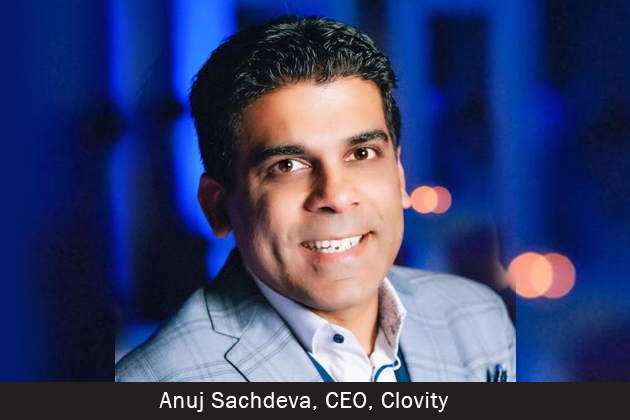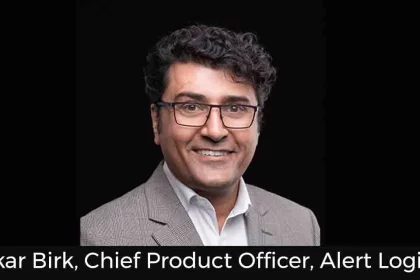IoT trends and the emergence of 5G technologies will continue to drive the next generation of digital business innovation for years to come. CEOs, CIOs and CTOs must keep this strategy in mind as they are funding capital innovation for any technologies that will impact their business and corporate infrastructure. IoT and 5G will accelerate those initiatives, providing a large influx of known benefits as well as those that haven’t yet been thought of yet.
For example, the key to 5G and the reason why it’s so attractive is that it supports a huge capacity for fast data. Wireless internet speeds that are one-hundred times faster than today’s 4G LTE technology are expected to be achieved with 5G in just a few years (max 20 Gbps vs. 100 Mbps). There is significantly less clutter with existing cellular data on 5G, meaning it can be used in the future for increasing bandwidth demands. The investment in IoT by Industrial & Manufacturing companies, Automotive, and Healthcare industries will enable them to benefit significantly from the coming 5G bandwidth capabilities. That bandwidth and speed increase will drive innovation for new sensor devices, set new security standards for integration, and give the ability to share data as well as applications at a massive scale and will make edge computing almost seamless. Autonomous vehicles, virtual robotics, and self-healing machines are just the tip of the innovation iceberg as different industries start down this path.
Where we believe the innovation will continue to expand and eventually lead is in the Industrial, Smart City vertical, Healthcare, Retail, and Automotive to name a few of the major industries that will invest heavily in IoT and a connected digital age.
Municipalities and city planners are finding huge benefits from IoT in service to Operational and Citizen Engagement. For example, in many cities “Urban Sprawl” is a major problem. It mainly refers to the unrestricted growth of many urban sectors like housing, commercial development, and roads over large expanses of land, often with little concern for urban mobility planning. In addition, the term also relates to the social and environmental consequences associated with this type of rogue development.
Big data and the IoT offers endless possibilities to enable stronger decision-making that was previously impossible. By deploying sensors that can track activity and report its finding in real-time, IoT can immediately make cities more pro-active, effective and efficient. This will becoming increasingly more necessary given the projected rapid growth of urban populations over the next few decades.
As a result, investment in smart city technology across North America is expected to double from $118.5 billion in 2016 to $244.5 billion in 2021. This rapid growth is spurred by the economic, social and behavioral impact of connected devices. In a short time, we will hopefully have a largely autonomous, smart, and connected world. Many of these initiatives represent innovations in city management, infrastructure and services for their citizens (like traffic management), air quality monitoring, weather monitoring, fleet city controls, and many other systems that will ultimately further the goal of bettering citizens’ lives.
Healthcare Payers and the entire patient journey can be and will be disrupted by the IoT world. This trend is only going to continue to grow over the next decade. As we watch IoT drive patient costs down, increase accurate diagnosis, help with preventative health maintenance, and fight fraud, companies will begin to see millions of dollars in savings with these initial use case roll outs. For example, tracking opioid use through IoT enabled pill dispensers that report when a pill is taken (or not), enable caregivers to closely track medication adherence. A relatively simple to deploy use case such as this leads to more accurate diagnosis, enable recommendations based on real time results, and help the Insurance companies keep doctors and patients accountable. After a short time, this solution will lower costs for expensive pills and steadily decrease patient costs. All this data sharing can happen using Smartphones and will have predictive capabilities built in to ensure no negative reactions or abuse occurs.
As IoT develops in complexity, collecting data is really only the initial phase of ROI. Adding elements of edge computing and AI functionality, will enable the next echelon of capability. The goal is to create a fully automated system, capable of sensing, thinking, determining, and reacting ‘intelligently’ all within a matter of milliseconds. As sensors gets more complex and AI achieves greater capability, human interaction should be only in a supervisory role. This is automation at its true purpose. Imagine traffic lights that understand holidays, road closures, outside temperature, weather, cross walk occupancies, and emergency response in the area. By tweaking light timing, these systems could effectively optimize for any situation or physical bandwidth issue. Eventually, cities and enterprise should be able to function without the traditional work demands that people are accustomed to. It is only through the mastery of AI and IoT will things evolve past the point of sensing and into the realm of automation.
As this industry evolves, bad actors will have a greater incentive to break through these IoT system’s defenses. Being able to take hold of railway systems, traffic lights, power grids, and any other connected device can cause significant harm to come to people or property. Even just the ability to lock city managers out of these systems could cost enough capital to drive a ransom payment. This is why making Systems, Devices and Data Secure overall will be of paramount importance as IoT continues to proliferate at its current rate.
What strategy is Clovity employing to build upon these trends?
We believe that there is a great need to become a service for companies who do not have the skills or the technology to launch complex IoT initiatives. As a result Clovity has launched the new IoT-as-a-Service model.
Like most success stories, companies rely on partnership or some type of 3rd party engagement to help them grow. The rapid development in hardware, software, network connectivity and cloud solutions re-defines the 4th Industrial Revolution. Companies cannot scale fast enough or get to market with the right product before the standards are determined for the next generation of solutions. Development in Digital, Cloud, Data or Connected Solutions are driving the fast-paced ramp up of requirements that companies target for partnerships, enabling them to scale and get to market quickly with their solutions.
Clovity has taken an approach to put all costs under a single umbrella for a consolidated per-device price with their IoT-as–a-Service offering. Clovity will procure the hardware, cloud, network connectivity, provide our IoT software platform – CSensorNet and give 24×7 support for any company that doesn’t have the ability to pull all the complex parts of the solution together or doesn’t have the skilled resources to support the solution for the long term. At the end of the day, the ROI for optimizing and utilizing IoT solutions comes in a matter of months (not years) and the full IoT-as-a-Service model provides white glove treatment of clients.
In conclusion, the evolution of the next Industrial Revolution is real and it is starting to take hold in a number of prominent industries. We will see this directly impact people’s lives across the globe in just a short time. As we continue to evolve development, skills and planning around 5G, the cloud, edge computing, AI/ML, blockchain and a myriad of other tools, they will all become crucial components of an expanding IoT-based solution. We will be drawn to new ideas that will connect us further and create a mainstay of life that will re-define human behavior as well as interaction with the world around us.










